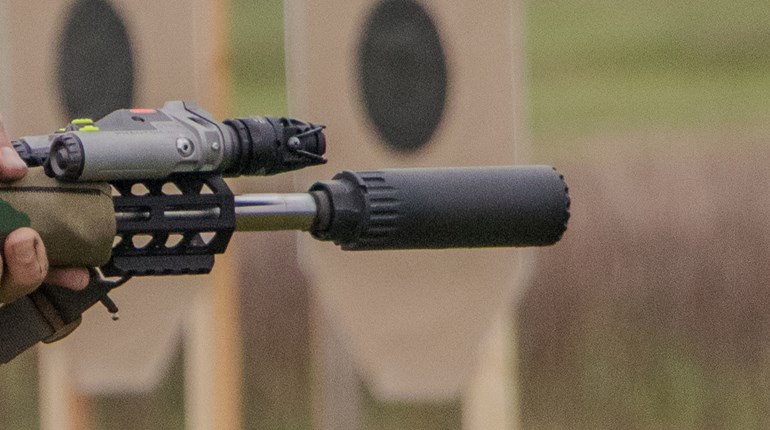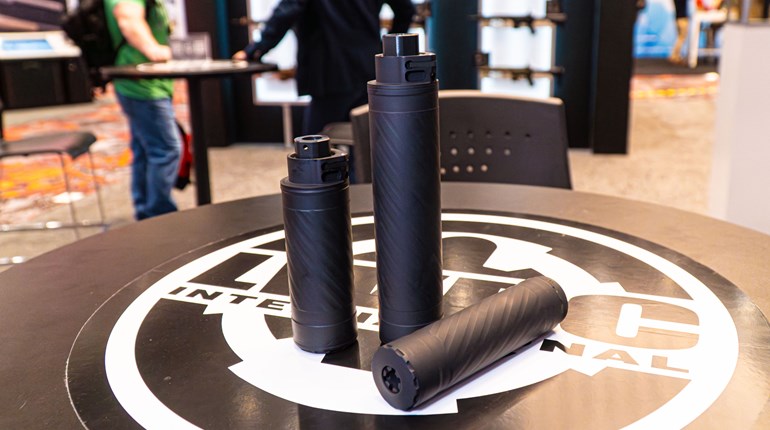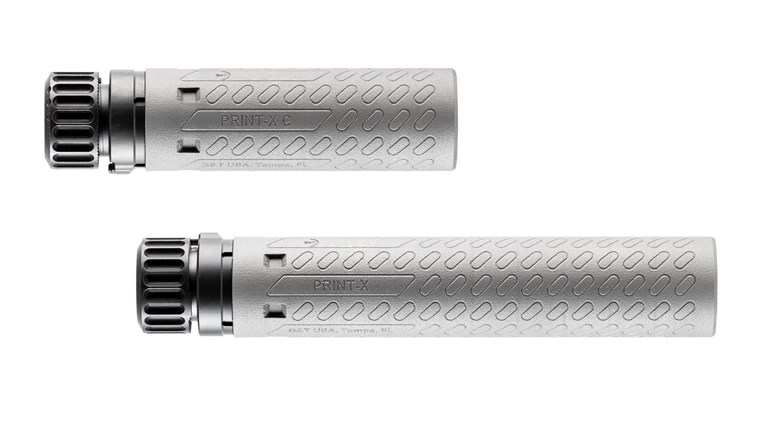
This article, "The Sweet Sound of Silence," appeared originally as a Handguns column in the January 2016 issue of Shooting Illustrated. To subscribe to Shooting Illustrated, visit the NRA membership page here and select Shooting Illustrated as your member magazine.
If you’ve attended a trade show in the firearm industry or just a local gun show in your home state, you’ve witnessed the classic scene of two elderly gentlemen standing only inches apart but practically shouting at each other. It’s not about anger, but just a couple of dedicated lifelong shooters having a normal conversation in the manner of all hearing-impaired guys.
While hearing damage might be immediately noticed from a single shot, noticeable hearing loss is generally a slower, long-term process. For me, serious hearing degradation became undeniable in the last few years, despite the fact that I’ve been very good about wearing electronic protection when testing guns and ammunition for articles. That isn’t always the case when hunting, where sudden opportunities don’t allow time to reach for ear plugs. Even more difficult to imagine is a life-threatening scenario that would allow time to find and apply some kind of hearing protection. Since I spent a few years working for a company that manufactures suppressors, it seems appropriate to take a hard look at what might be accomplished in real-life scenarios by fitting a noise-reduction device to a handgun rather than to one’s ears.
No one has built or designed a truly effective suppressor for any revolver except for the gas-sealed Russian Nagant. Putting a “can” on the muzzle doesn’t deal with the gases that escape between the barrel/cylinder gap. Yes, I’ve seen “silencers” on revolvers in films, but nobody believes everything (or perhaps anything) they see on television or in the movies. If you’ve chosen a revolver to protect yourself and your family, accept that you’ll be dealing with loud noise, particularly if you have to use the wheelgun in a confined space.
On the other hand, suppressors work quite well on semi-automatic pistols, and if your state allows private ownership of suppressors, this solution is definitely worth a look. In my home state of California, private ownership of suppressors is not an option, so a trip to a neighboring state was required to get some trigger time with privately owned “cans” on home-defense pistols. The guns used included two 9 mm semi-autos: a Glock G19 and a Browning Hi Power, as well as two full-size Smith & Wesson M&Ps (one chambered in .45 ACP and the other in .22 LR). All of the suppressors were manufactured by Gemtech.
Pistol suppressors generally weigh a pound or less. It depends on the caliber, with suppressors for .22 rimfire cartridges weighing less than those for 9 mm and .45 ACP. But it’s not just about adding a pound of weight to your handgun. You’ll be installing that weight at the end of the muzzle, which will drastically affect the gun’s balance. With the suppressor installed, the G19 grips felt too small, whereas without the suppressor, the G19 is one of my favorite-handling pistols. A full-size G17 strikes me as a better candidate with its bigger grip frame. You might expect the M&P22 to feel better with its lighter suppressor and larger grips, and it did. But the larger grips on the Browning Hi Power and .45-caliber M&P also made these guns easier to handle with the heavier suppressors.
Suppressors add somewhere between 4 to 8 inches to a pistol’s length, doubling the length of some pistols. This obviously makes concealed carry a problem. In cold weather, you might devise a concealable shoulder holster, but good luck dealing with summertime beach wear.
Perhaps not immediately obvious is the increased difficulty of discreet storage for a suppressed home-defense or car gun. A closet shelf or dresser drawer would probably work at home, but if you plan to take it in the car, most vehicle consoles won’t handle those dimensions, nor will the Hornady security vault on my nightstand where I currently keep my home-defense pistol.
Standard pistol barrels won’t accept suppressors. You’ll need some kind of adapter-mounting system, which means buying a second barrel for your existing handgun or buying one factory-equipped with a threaded barrel. Make sure the barrel has a thread protector for those times the can is not actually on the gun. If you damage the threads with an accidental bump against a hard surface, you won’t be able to attach the suppressor.
The standard sights on some pistols won’t give you a sight picture with the can installed simply because the sights aren’t tall enough to extend above the relatively large diameter of the suppressor. Firearm manufacturers are making taller sights for those guns that anticipate suppressor usage and, while these sights are oversize, they still work fine with the gun in unsuppressed mode.
The prescribed doctrine for a home invasion suggests holing up in your safe room with your pistol—hopefully, while behind cover—and calling the police. But if you ever have to move through the house, keep in mind that with your arms extended in firing position, the muzzle of your suppressed pistol extends farther in front of your body than a typical AR-style carbine or one of today’s shortened tactical shotguns would. Trying to clear your house or fetch a child with a suppressed pistol makes retention and protection of your firearm a much more-difficult task than with an unsuppressed pistol.
The good news is that if you have to fire, a suppressed handgun will allow continued fire, unlike a short-barreled .357 Mag. that can temporarily deafen all those present. Conversely, if you stay put and have to fire from the enclosure of your safe room, you and your partner can still communicate if the guns used are suppressed.
Should you decide on a suppressor, contact a Class III FFL in your state that can walk you through the acquisition process and cost. Finally, after you get your suppressor, by all means practice your various shooting and skill drills with your suppressor installed to learn the intricacies of the “new” gun.
Ultimately, putting a can on your handgun will help save you serious cash on hearing aids down the road.





































